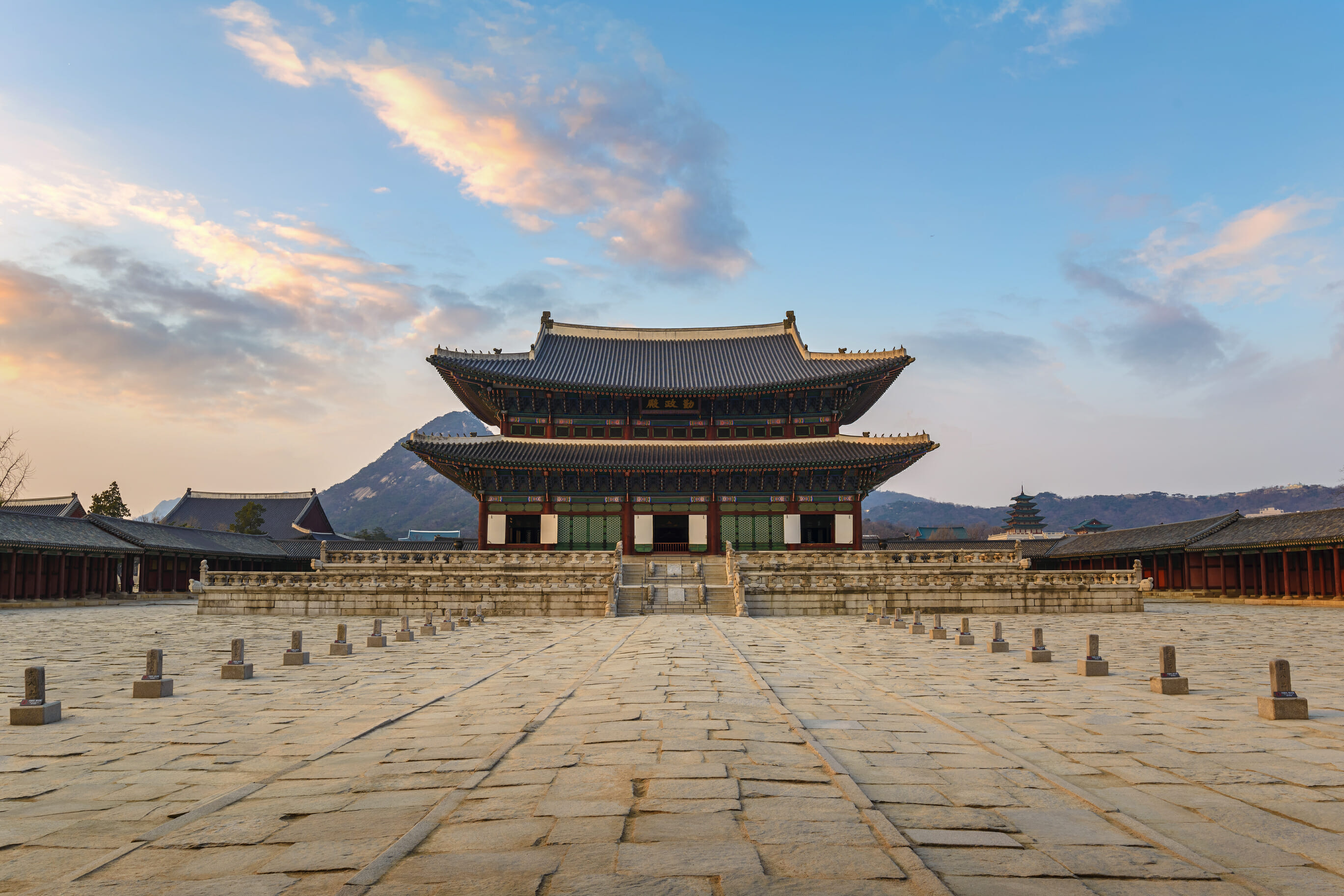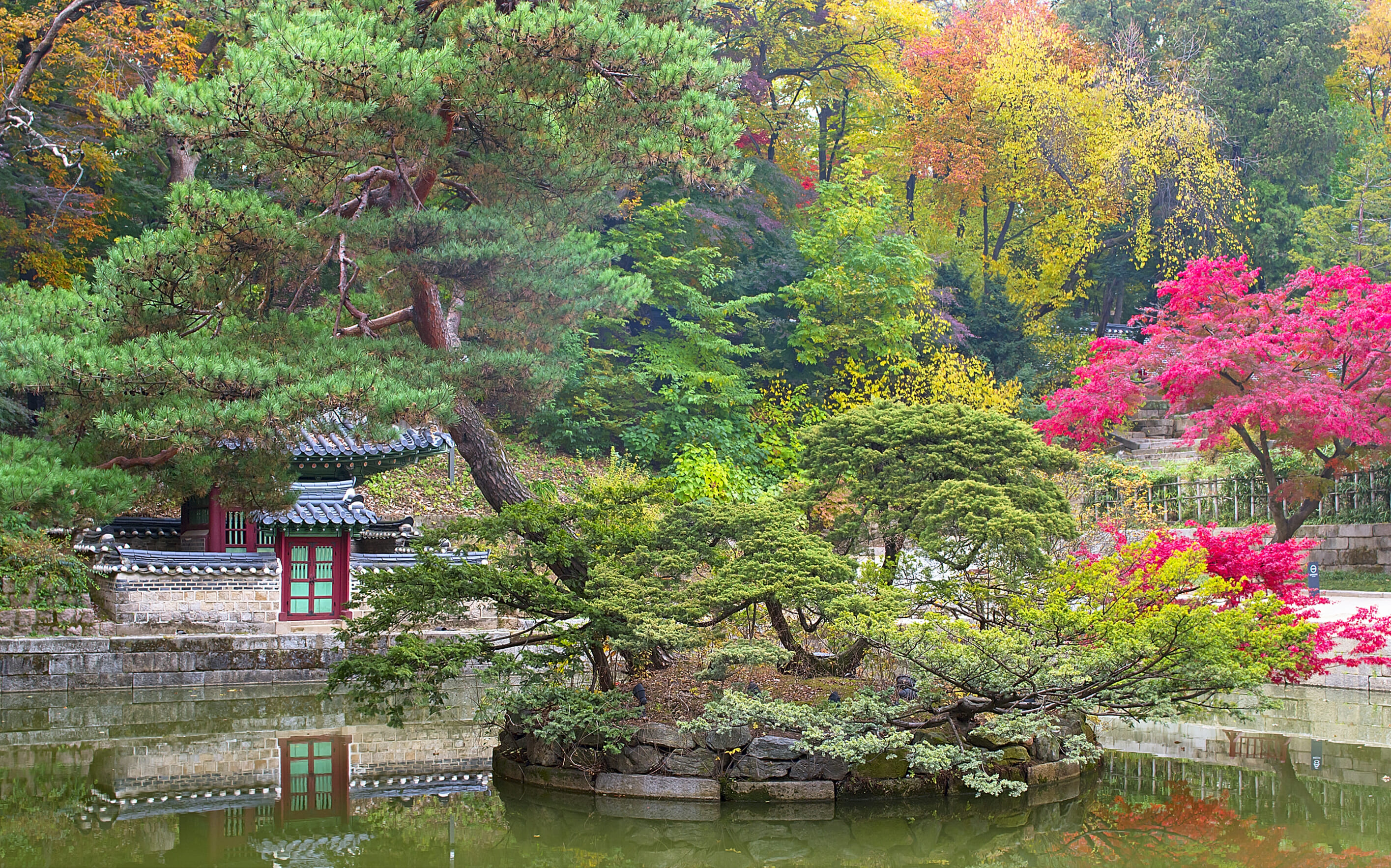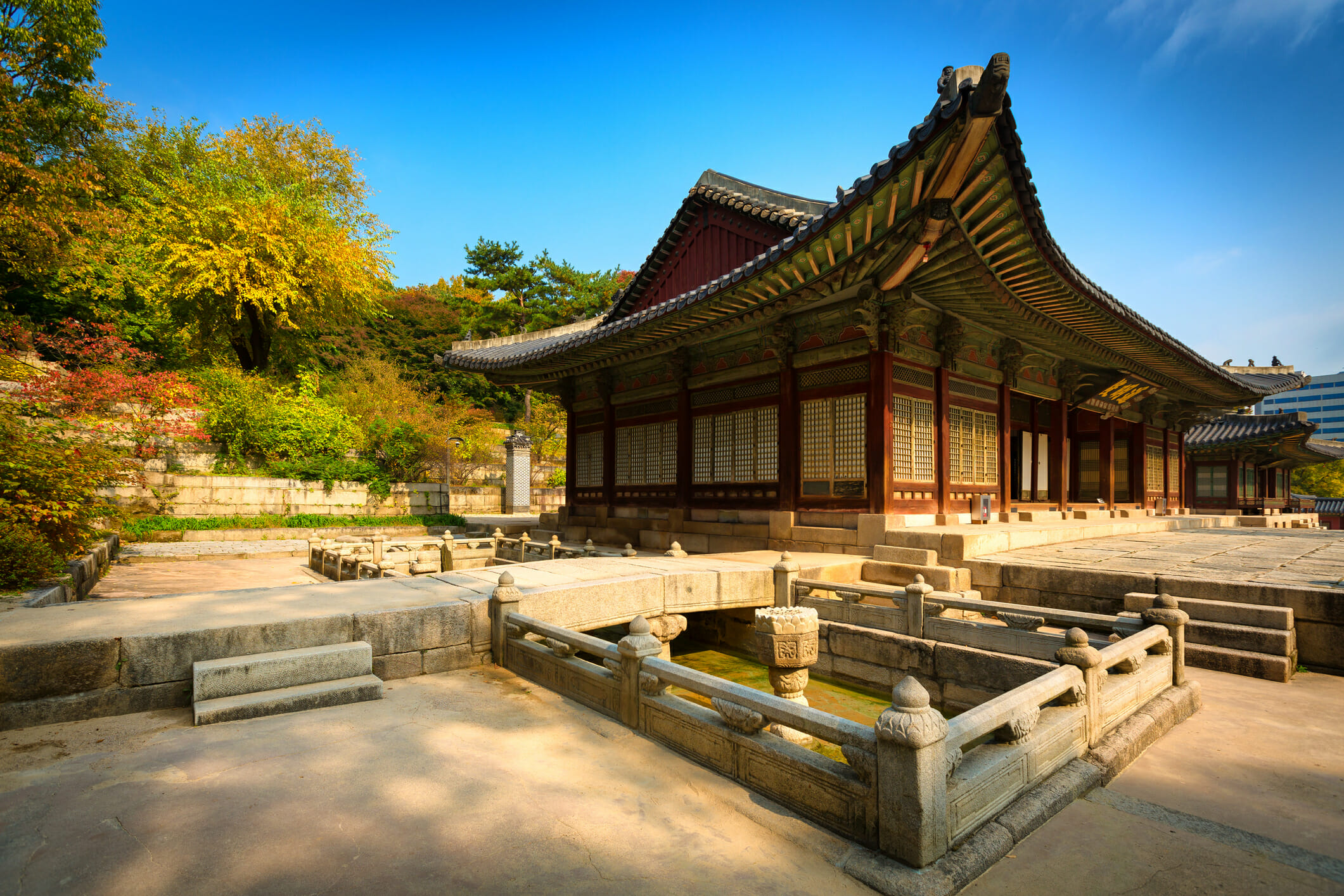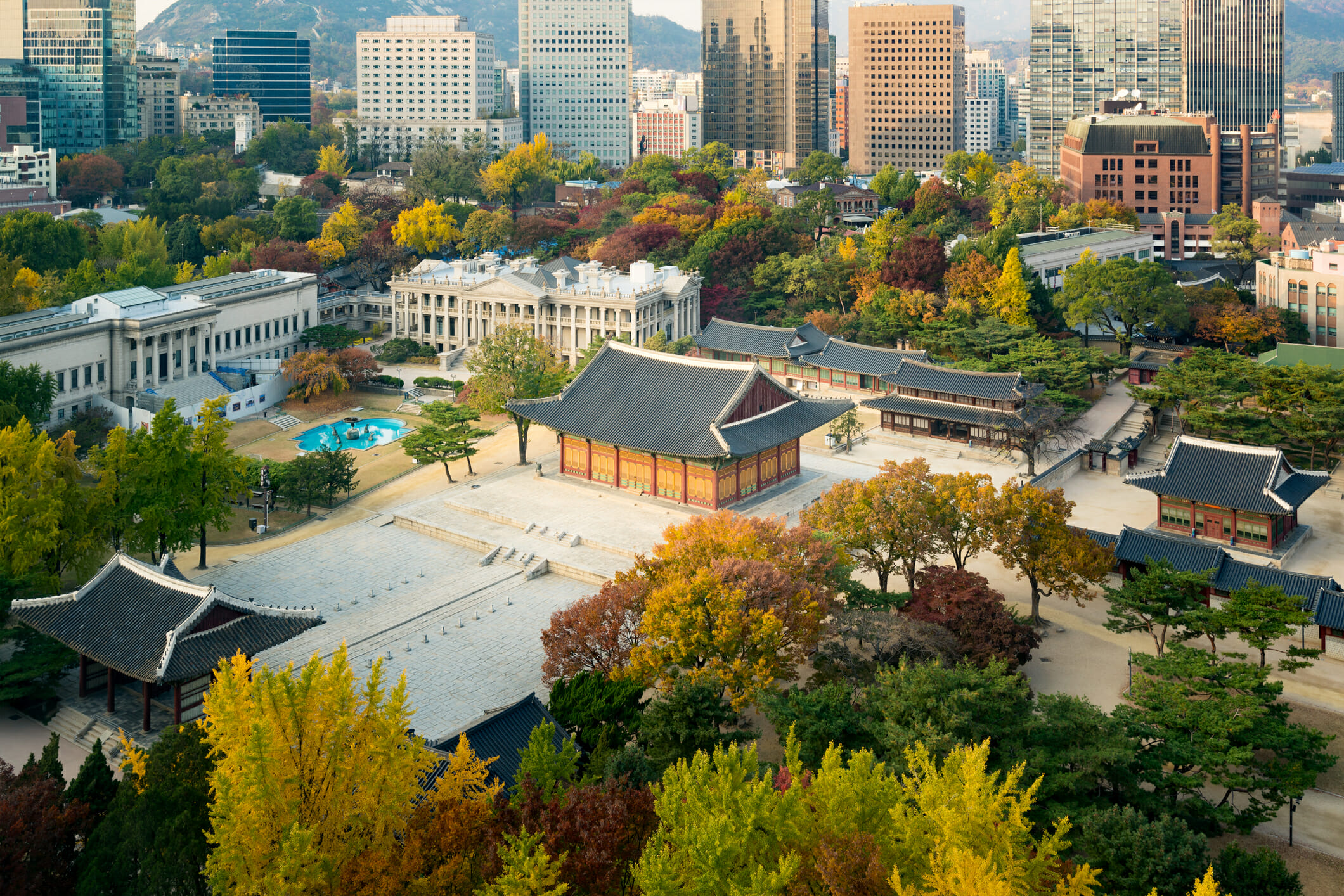Korean Palaces – The Five Grand Palaces of Seoul

If you plan to visit Korea, a few activities make it onto nearly every travel itinerary. One of these activities is to visit Myeongdong, while another is to take in the sights at Namsan Tower. However, a more traditional activity is to explore the grounds of one of Korea’s many palaces.
Most travellers will visit one of the five Grand Palaces in Seoul. Gyeongbokgung, Changdeokgung, Deoksugung, Changgyeonggung, and Gyeonghuigung are all located around the capital, each with its own highlights. For example, Changdeokgung features a stunning secret garden, whereas Changgyeonggung has a botanical garden you wouldn’t expect to stumble across in a palace!
While there is a range of other historic buildings found across the peninsula (temples and fortresses are especially common), most palaces, and all of the Grand Palaces are located within Seoul as this was the capital during the Joseon Dynasty; at the time, it was called Hanseong or Hanyang, but these are names for what we call modern-day Seoul.
Since these palaces are such an important part of Korean history, I recommend staying in Seoul long enough to check out at least one Korean palace. While the modern side of Seoul has almost limitless attractions, the country also has a rich history and culture that everyone should learn at least a little about. However, that begs the question: How do you pick just one to visit if you’re time-constrained?
Of course, if possible, the best answer is to visit every palace that you can. Unfortunately, it’s often not that easy because travelling often comes with time limitations. In this case, what palace is the best to visit? While many will give the obvious answer (Gyeongbokgung as it’s the largest and most famous palace in Korea), I don’t believe it’s this simple. While the other palaces may not get the same attention as Gyeongbokgung, they are all unique with different attractions.
Although many people visit the palaces to take photos and explore, there is also no better place to learn a bit about Korean history and traditions than at one of these palaces. They are well signposted and explained, and many feature museums within or nearby. On top of this, they’re all located in historically-important areas with a range of other traditional attractions.
So, if you’re wondering what Korean palace you should visit (or if you already know which palace you would like to visit but are looking for further information), read on! In this post, I will cover everything you need to know about Korean palaces, including how you can get free entry and which hidden attractions are most worth visiting. With that said, let’s get started!
Why You Should Visit a Palace in Korea
 Although I’ve already alluded to some of them, there are many reasons why you should visit at least one palace during your trip to Korea. Whether you’re interested in Korean history and culture or not, every traveller should learn a bit about the country and its traditions.
Although I’ve already alluded to some of them, there are many reasons why you should visit at least one palace during your trip to Korea. Whether you’re interested in Korean history and culture or not, every traveller should learn a bit about the country and its traditions.
To Learn About Korean History
There are three ways most travellers learn a bit about the country while visiting: museums, palaces, and temples. While museums arguably contain the most information, some travellers find them tedious or too time-consuming. If this is the case, the palaces of Korea are your next best option.
Not only do you learn a lot about Korea (especially if you explore them as part of a tour), but you get to take photos and explore along the way. This also makes exploring the palaces a far more entertaining way to explore Korean history and culture.
If you visit Gyeongbokgung Palace, you’ll find that there is also a museum located within the palace grounds. While this is entirely optional, it’s a great way to expand your learning while also navigating your way around the palace.
It’s worth noting at this point that even if you’ve travelled throughout Asia and visited palaces before, Korea has a unique culture that has remained distinct for thousands of years. While the palaces are based on Chinese principles, they are unique, and you won’t find anything similar outside of the country.
They are Beautiful (Perfect for Photos!)
 Another reason why the palaces of Korea are worth visiting is simply that they are beautiful. The palaces have traditional architecture, and while many have been rebuilt over the years due to disasters such as fires and wars, they still feel like they are straight out of the Joseon Dynasty.
Another reason why the palaces of Korea are worth visiting is simply that they are beautiful. The palaces have traditional architecture, and while many have been rebuilt over the years due to disasters such as fires and wars, they still feel like they are straight out of the Joseon Dynasty.
While you can still find this architecture in other locations around Korea, there’s nowhere else that you can see the scale which you’ll find in the palaces (especially the larger ones such as Gyeongbokgung and Changdeokgung). Since they’re so expansive, they also house a great variety of stunning photo locations.
I used to work as a photographer, and my main clients were travellers to Korea who wanted unique travel photos. I always recommend the palaces, and after spending many days at Gyeongbokgung, I can say with certainty that you’ll be able to take some stunning and unique photos there.
If you want to make your photos even more memorable and unique, consider hiring hanbok for yourself and your family or friends. Since these outfits can only be found in Korea, you’ll not only have some very special travel photos, but they’ll be thematically correct with one of the Korean palaces as your backdrop. Of course, hanbok is also beautiful and well worth wearing regardless of the photo opportunities!
For The Other Attractions
The final reason I recommend visiting the palaces is that they often have other attractions than the palaces themselves. For example, Gyeongbokgung Palace has a ceremony for changing the guards throughout the day. While this demonstration lasts only for a minute or two, it’s worth witnessing if you’re planning a visit at the right time.
Another example is the ‘secret’ garden in Changdeokgung. While you can’t freely explore the garden (you will need to be part of a tour to explore this part of the palace), there are guides taking groups through the garden at certain times of the day. The garden is stunning, and one of the reasons why I’ve written an article discussing why I recommend visiting Changdeokgung Palace instead of Gyeongbokgung.
If you’re still deciding if visiting a Korean palace is deserving of a place on your itinerary, I highly recommend that you find the time. There are so many reasons to visit the palaces of Korea, and you’ll be missing out if you don’t go to at least one.
Palace Visiting Tips
 Free Entry
Free Entry
There are three ways to get free entry into the five grand palaces in Seoul. The first method is to hire and wear hanbok, Korea’s traditional clothing. This clothing can be hired from a multitude of stores around the palaces and can cost as little as 10,000 KRW per hour.
Hanbok is available in men’s and women’s styles, and you will also be able to find children’s outfits available. While each store will have different outfits available, they are all colourful and elegant. The best part? Most rental stores will let you choose your outfit, meaning you can pick your own colour scheme and accessories.
Hiring hanbok is not only a way to save a little on the palace entrance fee, but it’s also a great way to experience the palaces in a truly unique way. You’ll feel like you’re living in the Joseon Dynasty! Of course, you’ll also get the best pictures if you decide to wear Hanbok to the palaces.
The second method for getting free entry into the palaces is less well-known, and it requires a bit more planning. If you happen to be in Korea on a (major) public holiday, the palaces will open up and admit everyone for free. Of course, if your holiday doesn’t overlap with a public holiday, this won’t work out, but it’s a good choice if the two coincide!
While the palaces will admit visitors for free on a few days throughout the year, the best holidays to visit are Chuseok and Seollal. These are three-day holidays which are combined with weekends to form a five-day holiday, and they typically fall in February/March and September/October.
Of course, depending on the public holiday you choose to visit during crowds may be crazy. However, this is another reason I recommend Chuseok and Seollal – during these days, most locals will be with their families, and even the number of tourists doesn’t seem to be any more than normal. This makes these two Korean holidays ideal times to visit!
The final method for getting free entry into the Korean Palaces is to visit on a Wednesday! Well… The last Wednesday of any month. This is another little-known secret, but if your holiday happens to fall near the end of the month, this might be a deal you want to take advantage of!
Timing is everything
 When you visit the palaces on a given day, timing is important for a few reasons. Firstly, the time you visit will significantly impact the number of other visitors you encounter. Since major palaces such as Gyeongbokgung are massive attractions, crowds can greatly alter your experience.
When you visit the palaces on a given day, timing is important for a few reasons. Firstly, the time you visit will significantly impact the number of other visitors you encounter. Since major palaces such as Gyeongbokgung are massive attractions, crowds can greatly alter your experience.
I used to do photography at the palaces, and in total, I would estimate I’ve visited the palaces over 100 times. After all these visits, I learned that the morning is your friend – get there as close to opening time as possible, and you will avoid most of the crowds. From noon until closing, the palaces will be packed and getting nice pictures without unintentional photo-bombers will be difficult.
Secondly, timing is important because the larger palaces will often have events that take place at only certain times. For example, at Gyeongbokgung, you can witness the changing of the guards at certain times throughout the day. At Changdeokgung, you won’t be able to visit the secret garden without a tour, and the tours only operate at certain intervals. For this reason, it’s important to plan ahead!
Finally, the palaces will stop admitting visitors an hour before closing. While you’ll likely want more than an hour in the palaces (especially the larger ones) anyway, it’s important to keep this in mind as you might otherwise be turned away.
Take a Tour
While exploring the palace grounds on your own certainly has its appeal (this is my favourite way to explore them!), there are also many bonuses to taking a tour through the palace of your choice.
The biggest benefit to having a tour guide is that you will be able to learn a lot that you otherwise probably would have never known. The tour guides are incredibly knowledgeable, and depending on the tour you choose, these can be a great way to learn more about the history behind each palace.
On top of this, some tours will give you entry into areas that you otherwise wouldn’t be able to visit. For example, the Secret Garden in Changdeokgung Palace requires a tour guide for entry, and this garden is a highlight of the palace. In these cases, being part of a tour is your only option for exploring the palace.
If you aren’t a fan of group tours like me, don’t worry! There are also many private tours available at more affordable rates than you might imagine. By checking websites such as Klook and Trazy, you can almost always find an affordable tour, many of which are private!
Palaces in Seoul
Gyeongbokgung

Entrance Fee: 3000 KRW | 1500 KRW for children
Opening Hours: 9 am – 5 pm/6 pm/6:30 pm (depending on the month)
Closed Days: Tuesdays
Closest Subway Station: Gyeongbokgung Station/Gwanghwamun Station
Attractions: Changing of the guard and National Folk Museum of Korea
Gyeongbokgung Palace is by far the most famous palace in Seoul, and it’s the palace that I would guess 90% of visitors to Korea who visit a palace go to. The palace is located in Gwanghwamun, a central district in Seoul with many embassies and consulates.
Gyeongbokgung is the most visited palace in Seoul for a few reasons. Firstly, it’s incredibly convenient to visit as it’s serviced by not one but two subway stations (Gyeongbokgung and Gwanghwamun stations). On top of this, it’s a truly massive palace with a range of other attractions, such as the National Folk Museum of Korea.
Since Gyeongbokgung is the most visited palace in Korea, it’s well-established and maintained. Due to this, various other attractions have popped up around it, including one of my favourite streets in Seoul, which is lined with traditional cafes and restaurants.
Gyeongbokgung is very cheap to visit, and you will pay only 3000 KRW entry per adult. If you’re wearing a hanbok, this fee is waived. While hanbok costs around 10,000 KRW per hour to rent, I highly recommend renting it even without the fee waiver. With this discount, it becomes an even more tempting offer.
While I love Gyeongbokgung Palace, it’s not my favourite palace in Korea (that award goes to Changdeokgung). This is simply because while Gyeongbokgung is massive (if you have the time to explore, it goes far further back than most visitors realise), there is relatively little interest once you pass the first sections of the palace.
However, this also means it’s perfect if you want to take some fantastic photos without being photobombed by crowds of visitors. While the first few sections of the palace are often packed, you will quickly find areas not frequented by other visitors as soon as you explore. This makes it the perfect place to explore if you’re looking for some stunning photos!
Many travellers will dedicate a morning or afternoon to Gyeongbokgung. While you will need a good three or four hours to explore the whole palace (including the folk museum and perhaps a drink at the cafe within the palace grounds), you can take in the most important sights and scenes in a couple of hours. However, since Gyeongbokgung stands in such a fascinating part of Seoul, I recommend dedicating at least a morning or afternoon to the area. This will allow you also to explore Bukchon Hanok Village, Insadong, and perhaps even another nearby palace!
If you’re looking to check out the most famous attractions in Seoul, this palace should absolutely be on your list – especially if you want to see the changing of the guards or check out the National Folk Museum of Korea. On the other hand, if you’re looking to take stunning photos or avoid crowds, I recommend one of the other palaces in Seoul.
Changdeokgung

Entrance Fee: 3000 KRW | Free for children
Opening Hours: 9 am – 4:30 pm/5 pm/5:30 pm/6 pm/6:30 pm (depending on the month)
Closed Days: Mondays
Closest Subway Station: Anguk Station
Attractions: Secret Garden (must be part of a tour)
Changdeokgung is the second most famous of the Five Grand Palaces in Seoul. Located a short walk from Gyeongbokgung Palace, Changdeokgung is a significantly smaller palace that attracts far fewer visitors than its larger counterpart. With that said, don’t expect it to be empty, as it still attracts its fair share of local and international travellers.
Similarly to Gyeongbokgung Palace, Changdeokgung Palace has gone through many eras. Initially completed in 1412, the palace was burnt down in 1592 before being reconstructed in 1609. Only 13 years later, the palace was burnt down again. Its current form is, unfortunately, only a shadow of its former self, as only around 30% of the original palace still stands due to damages caused during the Japanese occupation of Korea.
However, despite only around 30% of the original palace still standing today, Changdeokgung is a stunning palace and my personal favourite for photos. While all five palaces have their own beauty, Changdeokgung has always stood out to me as the most beautiful. Perhaps this is just my opinion, but I’ve always enjoyed exploring Changdeokgung the most out of the five palaces.
Changdeokgung Palace’s biggest attraction besides the palace itself is the ‘secret’ garden located at the rear of the palace. While it’s a secret by name only, the garden is often overlooked by travellers who either don’t realise it’s there or visit at the wrong times (as a tour guide is required to enter the garden).
Originally, this garden was meant only for the royal family. It contains a stunning lotus pond, large, landscaped lawns, and many different species of plants and trees. While the days of private use are now behind the garden, it’s still well maintained and looked after, making it worth visiting if you get the chance.
Another reason to visit Changdeongung is its fantastic location. Not only is Gyeongbokgung within walking distance, but you can easily rent a hanbok in the nearby streets of Insadong or Bukchon Hanok Village. Each of these streets also houses a variety of other attractions that could easily take an afternoon to explore.
Changgyeonggung

Entrance Fee: 1000 KRW | 800 KRW for children
Opening Hours: 9 am – 9 pm
Closed Days: Mondays
Closest Subway Station: Hyehwa Station
Attractions: Grand Greenhouse
Changgyeonggung Palace shares a similar history with Gyeongbokgung and Changdeokgung Palaces. Originally constructed and expanded in the mid-15th century and 1483, the palace was partially destroyed multiple times by Japanese invasions and occupations.
While Gyeongbokgung and Changdeokgung get most of the attention from travellers due to their extensive grounds and well-maintained buildings, Changgyeonggung Palace is often overlooked despite being within walking distance of the two more famous palaces.
However, despite being the least famous of these palaces, Changgyeonggung Palace has attractions that make it well worth visiting. On top of this, it’s also far less crowded than Gyeongbokgung Palace and Changdeokgung Palace, making it ideal for photos and exploring.
Perhaps the biggest attraction of Changgyeonggung and one of the key reasons it’s worth visiting instead of (or alongside) the larger palaces in Seoul is the breathtaking greenhouse you will find located within the palace grounds. The Grand Greenhouse is a greenhouse originally constructed over 100 years ago.
The Grand Greenhouse is expansive; inside, you will find hundreds if not thousands of plants of different species. While the greenhouse feels a bit out of place amongst the otherwise traditional-feeling architecture of the palace, it’s a hidden gem and something I accidentally stumbled across a few years ago. Needless to say, I was thrilled with what I thought at the time was quite the find!
If you’re deciding between palace gardens and don’t know whether to visit Changdeokgung’s Secret Garden or Changgyeonggung’s Grand Greenhouse, I would recommend both. They’re both very unique and very different in their appeals. However, if you can only visit one, it comes down to if you prefer the outdoor style of a homely garden or an indoor botanical garden feel.
Deoksugang

Entrance Fee: 1000 KRW | 500 KRW for children
Opening Hours: 9 am – 9 pm
Closed Days: Mondays
Closest Subway Station: City Hall Station
Attractions: Changing of the Guard ceremony
Deoksugung Palace is the second smallest of the Five Grand Palaces in Seoul, so it’s often overlooked in the face of the larger and more popular palaces. However, the small size is one of its greatest appeals – it’s easy to explore and feels more homely than the more immense palaces, some of which are truly vast.
Although it’s hardly surprising to say this anymore, Deoksugung Palace is also within walking distance of Gyeongbokgung Palace and the other palaces. As you might be able to tell by now, while different palaces held power at different times, the power of the Joseon Dynasty was always consolidated in one area.
Deoksugung is a unique palace because it has a more Western influence than the other nearby palaces. King Gojong was a king during the late Joseon Dynasty who resided at Deoksugung during his reign. Being open to Western culture, he constructed some buildings in a Western-style and even installed electric lights in the palace.
Similarly to Gyeongbokgung Palace, Deoksugung Palace has a changing of the guard ceremony, which takes place multiple times throughout the day. While the front gate isn’t as large as Gyeongbokgung’s, and the ceremony doesn’t have quite the same feel, it’s absolutely worth watching if you’re visiting at the right times.
Despite being the smallest of the Five Grand Palaces, Deoksugung has its charm, and while it isn’t my favourite palace in Seoul (that award still goes to Changdeokgung), I’ve always enjoyed my visits to this palace because it’s so unique. Whereas the other palaces feel very traditional and straight out of the Joseon Dynasty, Deoksugung combines traditional Korea and modern Korea.
Gyeonghuigung

Entrance Fee: Free
Opening Hours: 9 am – 6 pm
Closed Days: Mondays and January 1st
Closest Subway Station: Gyeongbokgung Station/Gwanghwamun Station
Attractions: Seoul Museum of History and Seoul Museum of Art
The fifth and final of Seoul’s Five Grand Palaces is the least talked about and the one you will find the fewest people visiting. While it still carries much of the appeal of the larger palaces, it’s often overlooked due to its small size and less touristy location.
Similarly to all the other palaces, Gyeonghuigung is located near Gwanghwamun, and it’s within walking distance of the more prominent and well-known palaces. However, to visit this palace, you will find yourself walking away from the touristy areas and, as such, this palace is the least visited of the five.
Unfortunately, the palace also shares the same history as most of the other Grand Palaces of Seoul, meaning it was burnt down and rebuilt multiple times over the past centuries. While you wouldn’t realise this (as the palace has been expertly restored), most of what you see isn’t the original construction.
To incentivise people to visit, and perhaps because of the palace’s relatively small size, Gyeonghuigung always has free entrance – regardless of whether you are wearing a hanbok or visiting on a public holiday. This makes it a great palace to visit if you happen to be in the area for wherever reason.
Despite being small, Gyeonghuigung still has multiple halls that were used by the royals and for council meetings. While you can’t enter these halls (similarly to the other palaces), you can go up to the door and see inside the rooms and get a feel as to what they would’ve looked like when they were in active use.
Gyeongguigung also houses both the Seoul Museum of History and one wing of the Seoul Museum of Art. If you’re looking to have a well-rounded cultural experience, these two attractions make Gyeonghuigung Palace a great place to visit. While I wouldn’t recommend making this palace the only one you visit during your trip, it’s a great addition to visit Gyeonghuigung alongside a larger palace.
Although many travellers and locals alike overlook Gyeonghuigung Palace, there are some reasons to visit. Perhaps most importantly, it’s a great palace to visit if you want to avoid the crowds. Similarly to the other less-trafficked palaces, this makes it the ideal spot for photos – especially if you decide to hire a hanbok and explore the palace grounds.

 Free Entry
Free Entry